Rex Rabbit
Rex Rabbit. Get the history, description, standards, photos of the standard-sized Rex breed. This dual use rabbit breed may be just right for you.
The short plush coat of the Rex breed is its distinguishing feature. The dense, plush, short fur is a furrier’s dream. When first introduced to a rex pelt, the early furriers could hardly believe their eyes, finally exclaiming, "We never saw anything so beautiful!"
History of the Rex Rabbit Breed
A rabbit with a “rexed” coat first came to light in 1919, amongst the barn rabbits owned by Mr. Desire Caillon of France. The thing was a sorry sight, described as “hairless” in some of the initial accounts. Besides the miserable coat which reportedly lacked guard hairs, its extremities were deformed and misshapen. Mr. Caillon sent the poor thing along with the other meat rabbits to the town’s Abbot.
The local Catholic priest saw beyond the health issues to the possible dollar signs. He acquired a second misshapen rexed rabbit from Mr. Caillon and began a breeding program in an attempt to create a decent breed out of these genetic wrecks.
He had no idea about genetics, but he did have the only known animals with this short upright fur. In 1924, when he had around 150 animals, the Abbot began selling them, and by "sell," we mean highway robbery.
The first rex-coated rabbit sold, a buck, along with 2 normal-furred does, sold for 6,000 French francs (a little more than $1,000) for the three animals. Many others sold at similarly outrageous prices. An intensive breeding program ensued.
By 1927, rabbits with rex coats could be found in Germany, Belgium, Switzerland, Holland, England, and
finally, the USA.
Rex Fur Mutations in Other Areas:
The same rex fur mutation was discovered in Lubeck, Germany, in 1924, and in Chartres, France, in 1927. In 1938 in Schoonhoven, Holland, the rex mutation occurred once again.
Rex Rabbits in the USA
Between the years of 1924 and 1929, a rex fur boom occurred in the USA.
Breeders loved the rex fur. Clubs began adding a "rexed" variety to many breeds, including Beverens, Chinchillas, Flemish, Havana, even New Zealands.
Finally, in 1929, breeders of rexed rabbits began organizing a specialty club dedicated to the creation of a standalone breed of rabbits with rex fur.
The name of the new breed underwent a few adjustments.
Initially called Castorrex, as its coat was the color of beaver (castor), and it was known as the King's rabbit (rex being 'king' in Latin), the name changed to Colorrex as new varieties were introduced, and finally, the reference to color was dropped and the breed became known simply as Rex.
Since 1940, breeders have worked diligently through selective breeding to turn these animals from "wrecks" into the excellent dual-purpose rabbits that they are today.
The National Rex Rabbit Club (NRRC) was established in 1958 and continues today.
Standards and Varieties of Rex Rabbits
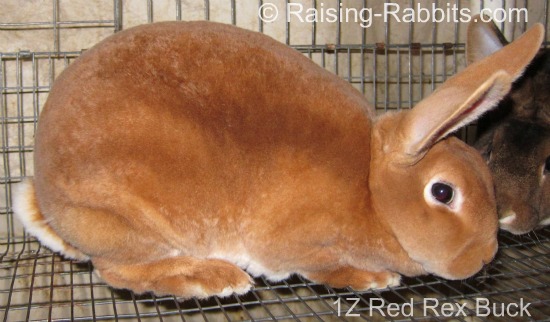 Red Rex
Red RexRex have a commercial body type that “exemplifies meat producing qualities.” See the ARBA Standard of Perfection for the complete standard, which describes the ideal qualities of all areas of the Rex rabbit’s body, including a list of faults and disqualifications.
In the USA, Rex fur should measure 0.5 to 0.75 inch long, with 5/8 inch being ideal. Bucks should weigh up to 9.5 pounds (4.3 kg). Does weigh up to 10.5 pounds (4.77 kg).
The fur should be extremely dense, short, and plush. It stands upright to the body – at a 90% angle as much as possible, and offers a springy resistance to the touch.
Its length and its texture should be uniform over all areas of the pelt, with no evident guard hairs protruding. The guard hairs are there; but being very nearly the same length as the undercoat, their presence offers density and body without being obvious.
In the USA, Rex Rabbits are recognized in 16 varieties:
13 of these varieties are pictured in the Domestic Rabbit Breeds e-book. |
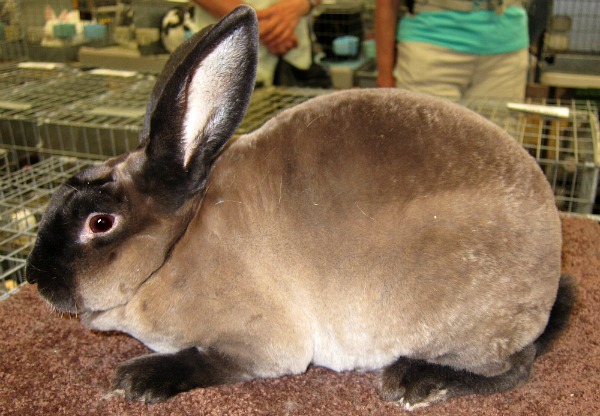 Sable Rex Sable Rex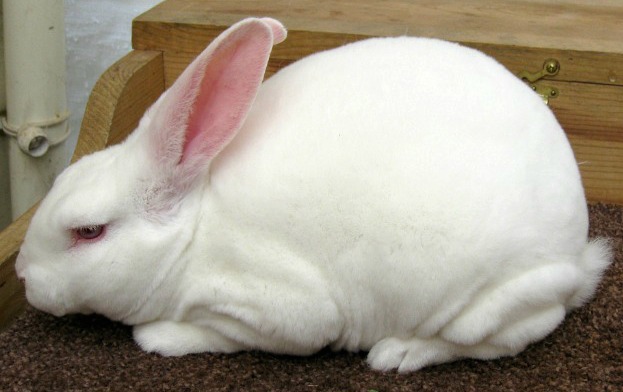 REW Rex REW Rex |
The Rex Breed in the UK
In the UK, the Rex is accepted in 28 colors. it is also found in a Satin variety and two rough-coated varieties (Astrex and Opossom). The British Rabbit Council maintains the standards for domestic rabbits in the UK, including Rex Rabbits.
In the UK, Rex fur ideally measures 1.27 cm (0.5 inch) long. Adults weigh 2.72 - 3.62 kg (6 - 8 pounds).
Interested in other rabbit breeds?
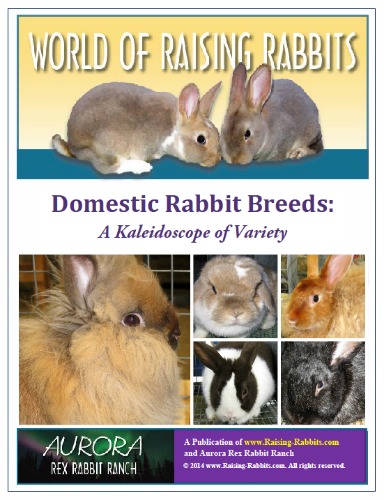
Are you trying to decide which breed is best for you?
Do you see a bunny available, but haven't heard of that kind before?
Are you curious about the different types of rabbits?
Check out our ebook, Domestic Rabbit Breeds. We also have lots of other great books with everything you need to know about rabbits, from housing to healthcare. Check out our BOOKSTORE.
New Year Special! Ring in 2025 with a resolution to learn about rabbits! (It will help you with your resolution to avoid snacking...)
All of our ebooks are ON SALE, 30% off!
Double-Value Guarantee
Our policy is to always OVER-deliver
on value,
which is why your purchase is fully covered by our
Double-Value
Guarantee.
Go ahead - take any of our e-books for a test drive. Peruse our detailed informational and educational e-books. Examine our plans for building rabbit cages, runs, or metal or PVC hutch frames. Check out the Rabbit Husbandry info e-books.
If you aren't completely satisfied that your e-book purchase is worth at least double, triple or even quadruple the price you paid, just drop us a note within 45 days, and we'll refund you the entire cost. That's our Double-Value Guarantee.
Note: When you purchase your
e-books, they will be in PDF format, so you can download them to any device that
supports PDF format. We advise making a back-up copy to a drive or cloud
account. If the books are lost, you can also purchase another copy from Raising-Rabbits.
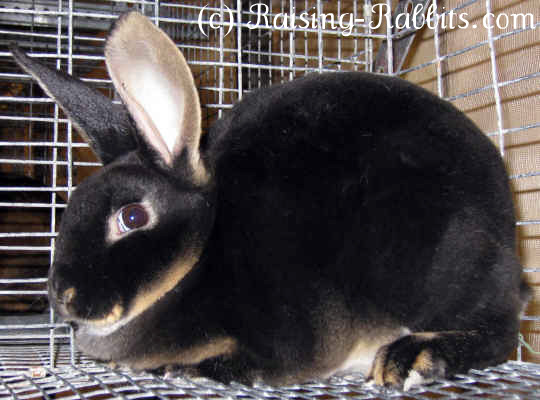










New! Comments
Have your say about what you just read! Leave me a comment in the box below.